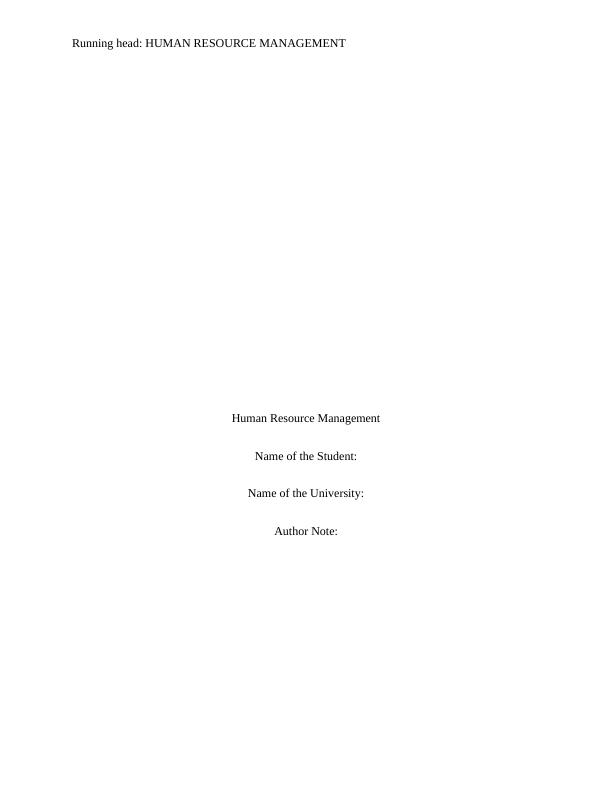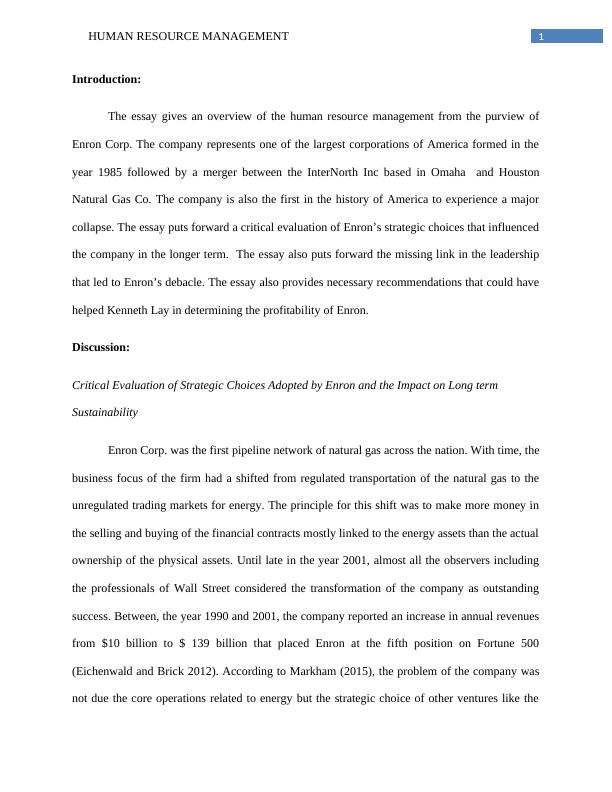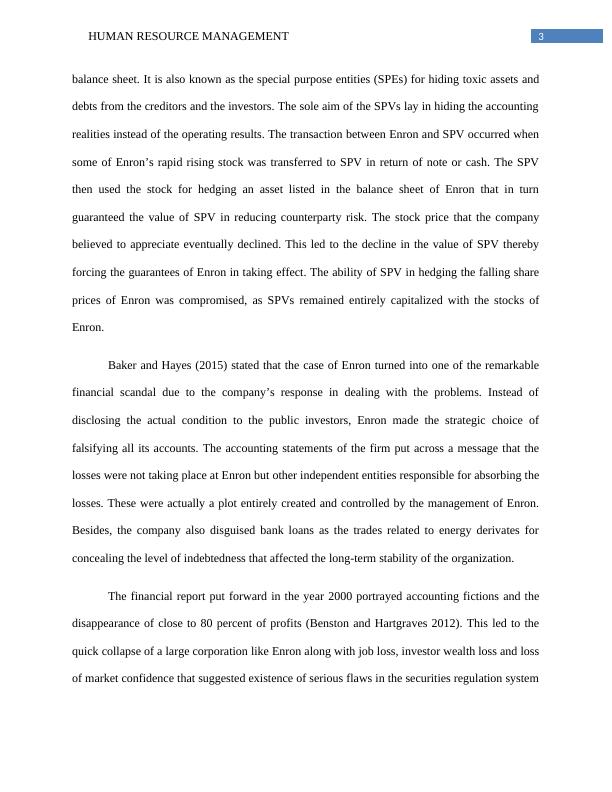Enron's Strategic Choices and Leadership: A Critical Evaluation
Analyzing the collapse of Enron and its impact on employees and the financial market.
11 Pages2916 Words253 Views
Added on 2023-06-09
About This Document
The essay evaluates Enron's strategic choices and leadership that led to its downfall. It discusses the impact of Enron's strategic choices on long-term sustainability, missing link in leadership that led to the development of a particular culture, and recommendations for maintaining profitability and corporate social responsibility. The subject is Human Resource Management, and the course code and college/university are not mentioned.
Enron's Strategic Choices and Leadership: A Critical Evaluation
Analyzing the collapse of Enron and its impact on employees and the financial market.
Added on 2023-06-09
ShareRelated Documents
End of preview
Want to access all the pages? Upload your documents or become a member.
Enron Scandal and the Implementation of Sabane-Oxley Act 2002
|7
|2340
|96
Enron Scandal: Corporate Governance and Sarbanes Oxley Act, 2002
|8
|1945
|83
Assignment on What are the Basic Accounting Theories?
|12
|2844
|121
The Importance of Corporate Governance - MPAC 290
|15
|4091
|62
Report on Strategic Management in British Petroleum
|15
|3257
|37
Supply Chain Management
|8
|1349
|31




